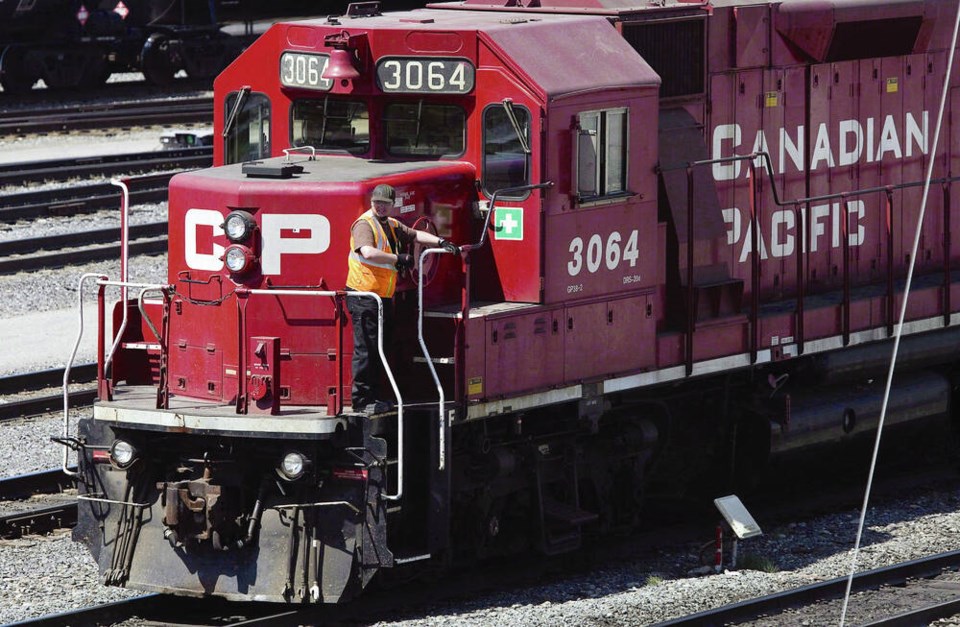Railways have figured large within Canadian and B.C. history, economies and politics.
They have shaped Canada geographically, politically, economically and socially by stitching B.C. and the prairies to the eastern provinces via one long steel and creosote-soaked wooden seam and a generous corridor of land grants along the route.
Anniversaries of two significant railway-related events occur this fall.
One is of the resolution of a scandal that rocked Canada’s Parliament 150 years ago. The Pacific Scandal prompted the resignation of then-prime minister Sir John A. Macdonald — he of residential school infamy and statue controversy — and an abrupt change in federal government.
The scandal began unfolding in April 1873. The Liberal Opposition in Ottawa announced in the House of Commons that they’d uncovered evidence that private business interests had paid large sums of money to the federal Conservative government to cover election expenses in the 1872 federal election in a bid to influence bidding for a national rail contract.
Forty-five-hundred kilometres away, B.C. was a key player in the scandal’s lead up. As part of the western colony’s 1871 contract to join Canada, the federal government had agreed to build a railway from the B.C. coast to eastern Canada.
Such a railway would bring B.C. into Confederation and tie the west to Ottawa. It would also facilitate movement of goods, information and settlers (and if need be, troops) across the country, strongly signalling jurisdiction against rapid, land- and resource-hungry American expansion.
It was an aggressive capitalist proposition. Whoever controlled the line would control transportation and communications across Canada. A very great amount of money could be made and was at stake.
It was also expensive. With a population of only 3.5 million people, Canada lacked the funds, and Britain didn’t want to be on the hook.
The remaining option for funding was private investment.
Despite the long timelines and the uncharted risks, two groups competed for the contract.
In November 1873, seven months after the Opposition first revealed that one of the business groups had been granted the Canadian Pacific Railway contract in exchange for political donations of $360,000 (about $9 million in today’s dollars), Parliament passed a vote of no confidence in the Macdonald government.
He resigned, and the Liberal party took power. They were officially elected in 1874, the first federal election in which secret ballots were required — an unforeseen outcome of the Pacific Scandal that remains standard election practice today.
However, Macdonald and the Conservatives returned to power in 1878. They proceeded to award the disgraced bidding group the contract to finish the national railway begun under the interim Liberal government to Port Moody.
They also adopted the land grants system to subsidize construction. The Canadian Pacific Railway received lands across western Canada equal in size to the area of England. The company also received lands for rights-of-way, stations and yard works.
The CPR line was finished in 1885.
The Esquimalt and Nanaimo (E&N) Railway was part of the same B.C.-Canada Confederation deal. Robert Dunsmuir, coal baron and politician, received from the B.C. government $750,000 (about $22 million today) and 800,000 hectares and their associated mineral rights along the line to build the Â鶹´«Ã½Ó³»Island rail line.
Macdonald, who was present at the CPR’s Last Spike ceremony west of Revelstoke in 1885, drove the last spike in the E&N line at Shawnigan Lake in August 1886.
We’re still waiting to hear what the fate of the E&N will be. In March, the federal government reverted hectares of land along the rail corridor back to the Nanoose-area Snaw-Naw-As First Nation, while British Columbia committed $18 million to consult with First Nations about the rail corridor, with results due next December.
The second railway-related anniversary that occurs this fall is that of the establishment of the Canadian National Railway.
CN was formed 100 years ago, when all federally owned railways in Canada (imaginatively called the Canadian Government Railways) merged — the Canadian Northern Railway between Â鶹´«Ã½Ó³»and Quebec City via Edmonton, the Grand Trunk Pacific Railway from Prince Rupert to Thunder Bay and on to Moncton, and the Grand Trunk Railway in Ontario and Quebec.
CN became for many decades the CPR’s main competitor, offering businesses, farmers and others an alternative for transporting goods across the country by rail.
>>> To comment on this article, write a letter to the editor: [email protected]



